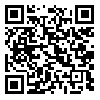BibTeX | RIS | EndNote | Medlars | ProCite | Reference Manager | RefWorks
Send citation to:
URL: http://rmm.mazums.ac.ir/article-1-182-en.html
2- 2- Associate professor in Exercise Physiology, Department of Sport Sciences, Tarbiat Modares University, Tehran, Iran.
Background: The purpose of present study was to investigate whether Sphingosine 1-phosphate (S1P) levels and its receptors gene expressions are correlated with MyoD and myogenin following resistance training.
Materials and Methods: 24 eight-week-old male Wistar rats (190-250 gr) were assigned randomly to a control (N = 12) or training (N = 12) group. Rats climbed a resistance training ladder with weights attached to their tails. The content of plasma S1P and relative mRNA expression were determined by high performance liquid chromatography (HPLC) and Real-time PCR, respectively.
Results: Resistance training increased the content of S1P in plasma (P = 0.001) and changed the gene expression of S1P1, S1P2 and S1P3 receptors. There were significant correlations between plasma S1P and gene expression of S1P2,3 receptors with gene expression of MyoD. There are correlations between satellite cells activation markers (MyoD and myogenin) and plasma S1P content and its receptors before and after resistance training.
Conclusion: It might be concluded that S1P as a growth mediator may play an important role in skeletal muscle adaptations.
| Rights and permissions | |
 |
This work is licensed under a Creative Commons Attribution-NonCommercial 4.0 International License. |






